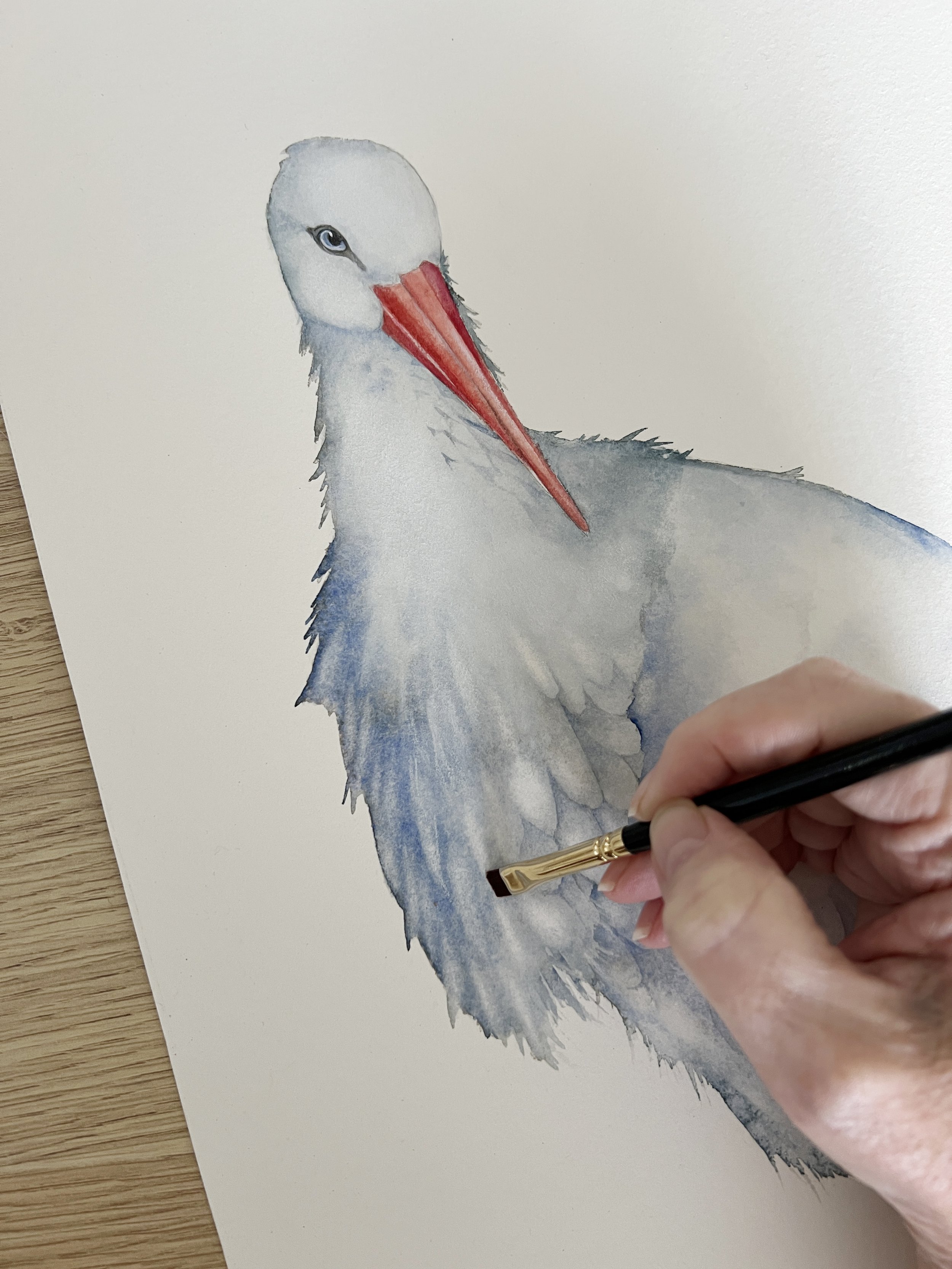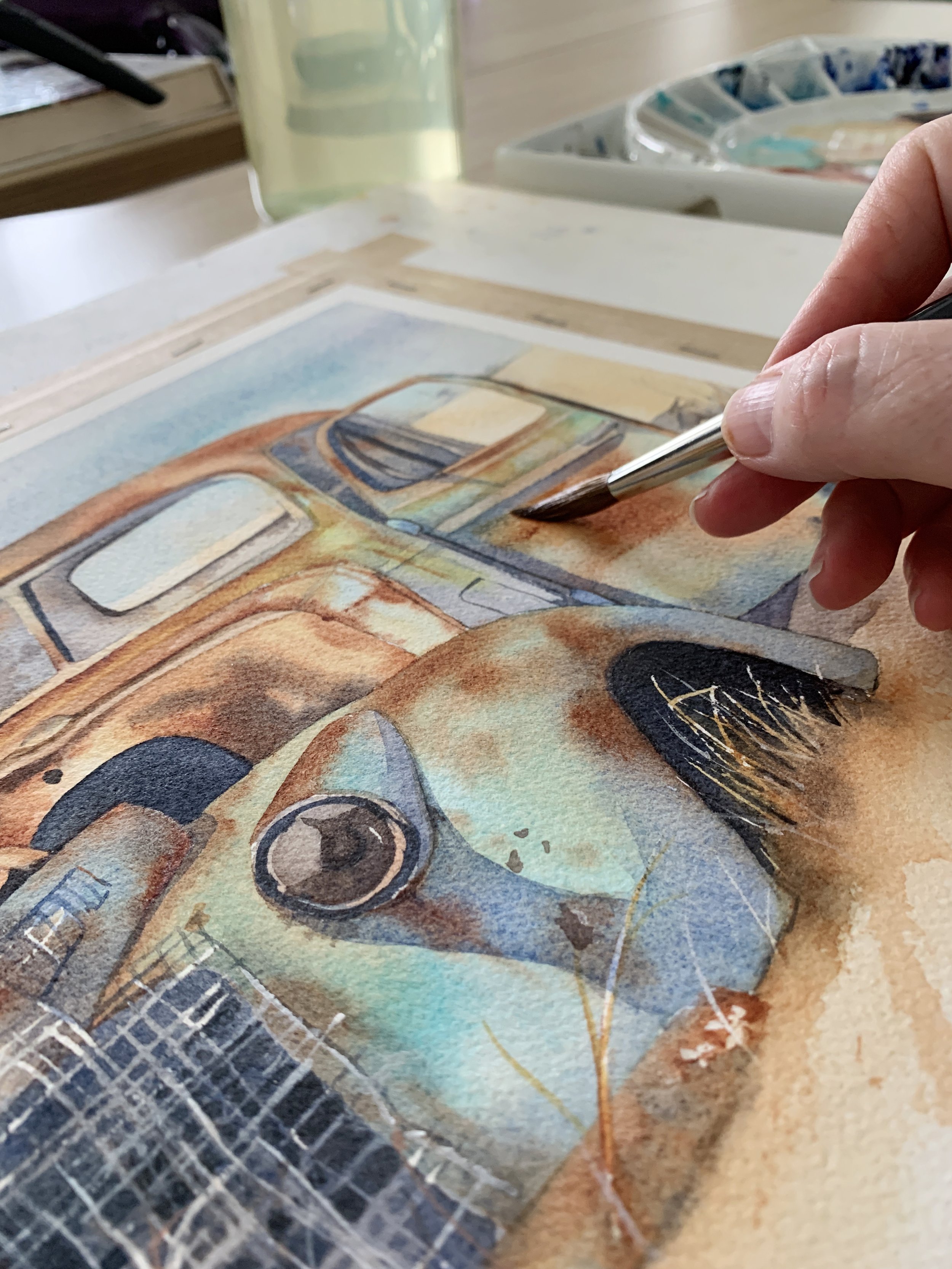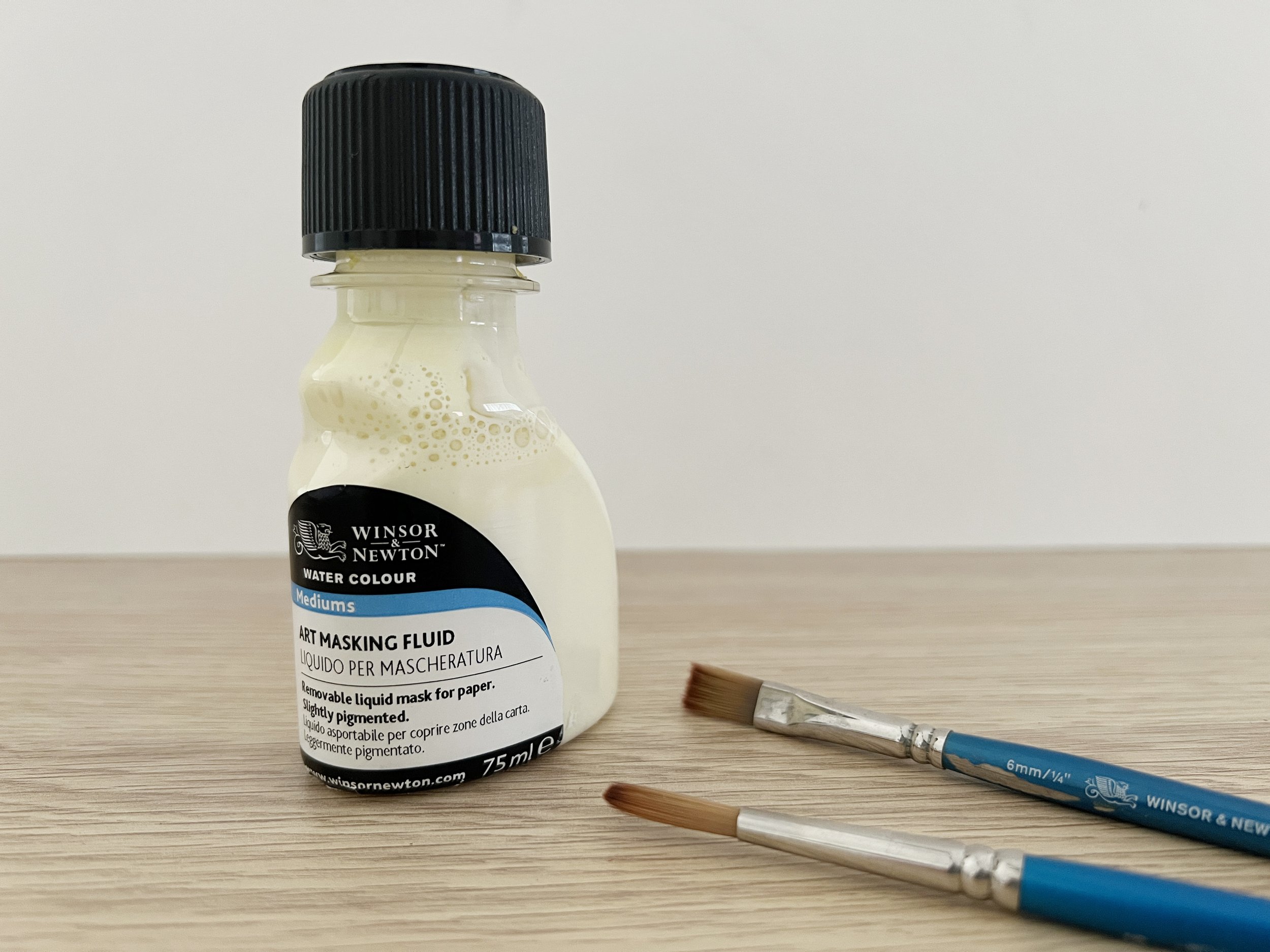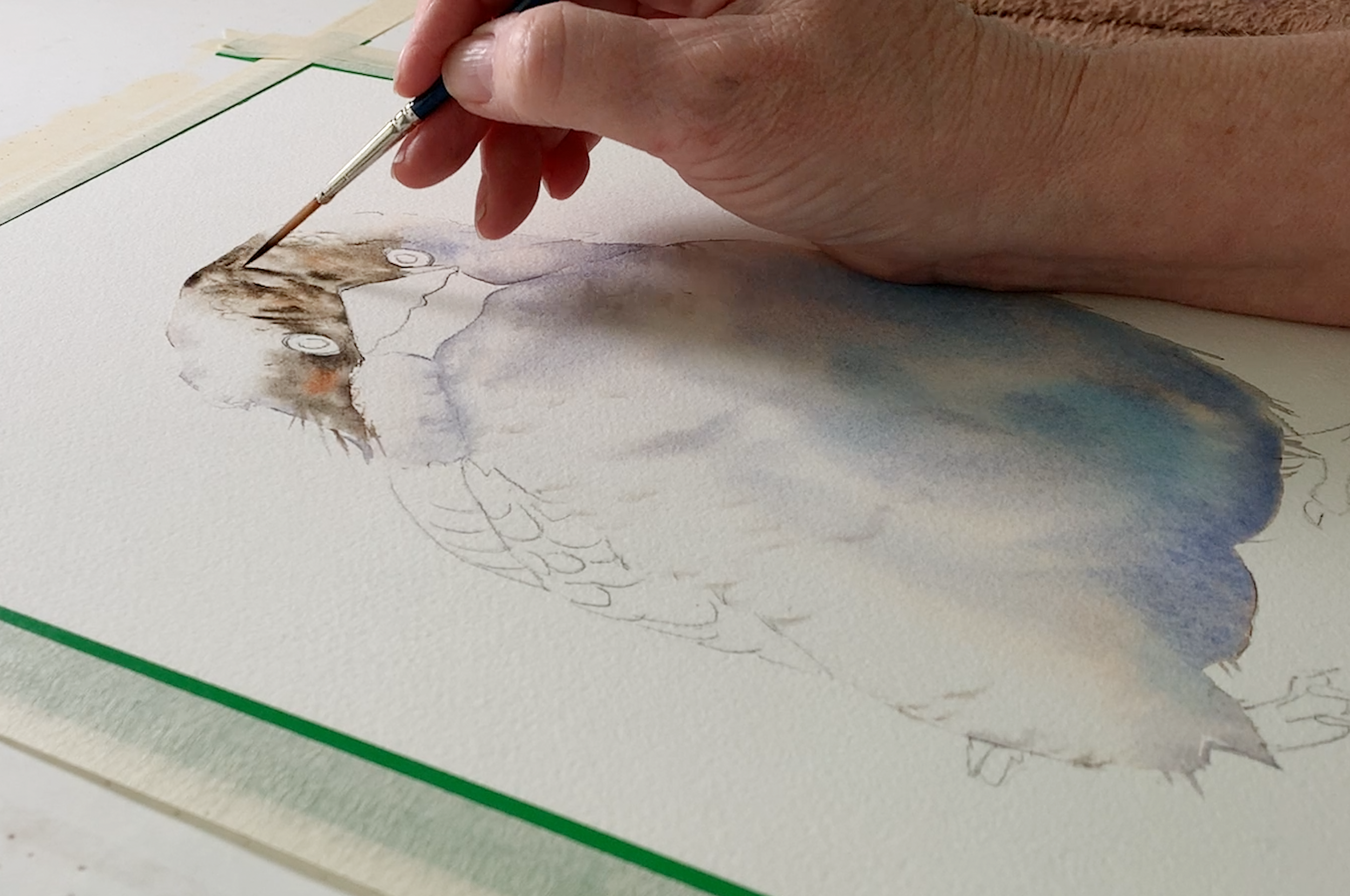I love painting birds, and it's a lot of fun for me, but it wasn't working at the beginning. Even though I worked off reference photos, I needed a better understanding of what I wanted to achieve. The first painting did not turn out as planned, prompting me to start over, not once but multiple times. I had to develop new ideas and spend time practicing creating a beautiful artwork.
Read MoreThere are two effective methods to achieve soft edges in watercolour painting. The first is the wet-on-wet technique, where you are applying paint to wet paper. This method allows the paint to spread across the moist surface, naturally creating a soft edge as it disperses. You can apply this technique to paper that's visibly wet and shiny or to paper that's merely damp, after the initial sheen has faded.
Read MoreColour value, in its essence, refers to the lightness or darkness of a colour. In watercolour painting, where the medium's transparency plays a crucial role, value becomes a powerful tool. It's not just about choosing the right colours but understanding their inherent lightness or darkness and how they interact on paper. This interaction is what ultimately shapes the mood, depth, and realism of our work.
Read MoreIn my studio, surrounded by brushes, pigments, painting materials and light that inspires my work, the choice of paper is paramount. The watercolour paper surface and the used sizing will greatly affect the outcome. I've found that artist-quality papers, like Arches, offer a balance that complements the lifting technique beautifully.
Read MoreBefore you start painting, every artist’s journey begins with the first step: selecting your tools and getting familiar with all the materials you need. Watercolour paints come in pans and tubes, each with its unique charm. Watercolour brushes, in their myriad shapes and sizes, are your loyal companions, and watercolour paper—your canvas—awaits with its textures and weights. There is cold press paper, hot press paper, paper, that lies in between... Let's not forget the supporting cast: watercolour palette, masking fluid, and sponges.
Read MoreImagine water as the dance partner in your watercolour tango. Like any good partner, water can lead you to create fluid, dynamic movements on the paper. However, if not in sync, it can step on your toes, causing washes to bleed uncontrollably or colours to become dull. Very little water will result in dry brush like strokes, whereas too much water will flood your paper and make the colour hard to handle.
Read MoreBackgrounds in art fill the critical space between the subject and the frame, turning empty canvases into resonant scenes brimming with life. They define the positive (subject) and negative (space around the subject) spaces, adding layers of depth and context. A background can support the main subject with a contrasting or complementary backdrop or even steal the spotlight, as Vincent van Gogh’s “Starry Night” beautifully illustrates. They're not just settings; they're expressions, setting the mood, suggesting settings, and influencing the viewer's emotional response.
Read MoreDiving into the world of watercolor painting can be both exhilarating and a bit daunting for beginners. With its beautiful washes and vibrant hues, watercolor art offers a unique medium to express creativity. However, the thought of mastering this fluid form of painting might seem overwhelming at first.
Read MoreUnstretched paper naturally buckles when water and wet paint are applied, as the paper's fibres expand, creating an uneven surface that presents challenges during painting. This buckling can result in unexpected streaks, blooms, and undesirable edges, ultimately compromising the intended effect of the artwork. As well as that, the buckled paper may dry unevenly, which not only effects the painting process but also the presentation of the finished painting. Techniques like wet-on-wet or gradients, which rely on precise control over the paper's moisture, become difficult to execute effectively when the paper is not properly flattened.
Read MoreBefore you start practicing there are several factors that can affect the outcome and quality of your brush strokes in watercolour painting.
Be aware of how much water you have mixed into your paint mixture. Thicker paint may result in more textured strokes, while thinner paint creates smoother, more translucent effects. When you are practicing brush strokes like those demonstrated in this blog post, you want the paint brush to glide over the paper so your paint mixture needs to be fluid and not too thick.
Read MoreUnderstanding the amount of water on your brush and its interplay with the paper is vital. Watercolour techniques like dry-on-dry, wet-on-dry, wet-on-wet, and dry-on-wet are not just techniques; they are the essence of watercolour painting. Each watercolour method allows for a different expression of water and pigment, and mastering these can elevate your art.
Many beginners may not use enough water on their paper. The brush should glide effortlessly over the paper for most techniques, except for dry brushing. Adjusting the water level in the paint mixture or in your brush, can help achieve the right flow.
Read MoreWhen it comes to applying masking fluid, your imagination is the limit. You can use synthetic brushes, ruling pens, silicone brushes, toothbrushes for splattering effects, sponges, bamboo quills and even fountain pens. Each tool brings its own unique magic to the paper.
Read MoreI refer to a lost edge as an edge that is absent. A lost edge is painted by allowing the adjacent colours or values to blend or bleed into one another. In the Leucadendron painting below I have obscured the edges of some of the bracts and leaves by making the background colour the same colour as the subject.
Read MoreThe pre-mixed blacks appear a bit dull and uninspiring compared to the black I mixed myself. There's just something about the personally mixed hue that adds a touch of life to it. It's subtle, but it makes a difference.
When you mix blacks you can also adjust the temperature of the colour which will add some life to your paintings. Because you are mixing colours together, you are in control of the ratios. If you want a cool black, mix more of the cool colour you are using. If you want a warm black use a bit more of the warm colour you are mixing with.
Read MoreThe goal of using a limited palette is to achieve color harmony, simplify the decision-making process, and gain better control over the interaction of colors in a painting. You use a limited palette to create balanced, cohesive, and visually pleasing paintings.
It's important to note that a limited palette is not 'limiting'. Hazel Soan emphasises that working with a limited palette doesn't confine your creativity; instead, it sets you free. It empowers you to paint fearlessly, secure in the knowledge that your colors will harmonise effortlessly.
Read MoreWhen creating drawings for watercolour paintings, you need to select and include essential information while omitting unnecessary details. Planning plays a crucial role in guiding these decisions it serves as a roadmap, allowing you to make informed decisions about what to emphasise in your line drawing.
Begin your painting process by carefully choosing your reference material, prioritising clear focal points and well-defined shapes that will translate effectively into your drawing.
Read MoreTo test both of these mediums, I took two glasses and used two pipettes. In one glass, I put 5 drops of gum arabic, and in the other, I added 5 drops of ox gall. Then, I painted rectangles of each solution in my watercolour diary, alongside a rectangle using just plain water. I watched them dry, and indeed, the rectangles with the mediums mixed into the water stayed wet longer than the rectangle with plain water. However, the difference in drying time was marginal. Nevertheless, I was still hopeful that these mediums would make a difference to blending and drying times when I was painting.
Read MoreThere are a few different watercolour techniques you can use on both a wet surface, and on a dry surface.
Get yourself a 100% cotton watercolour journal and spend some time practicing all of the blending techniques I have described below.
Read More
















